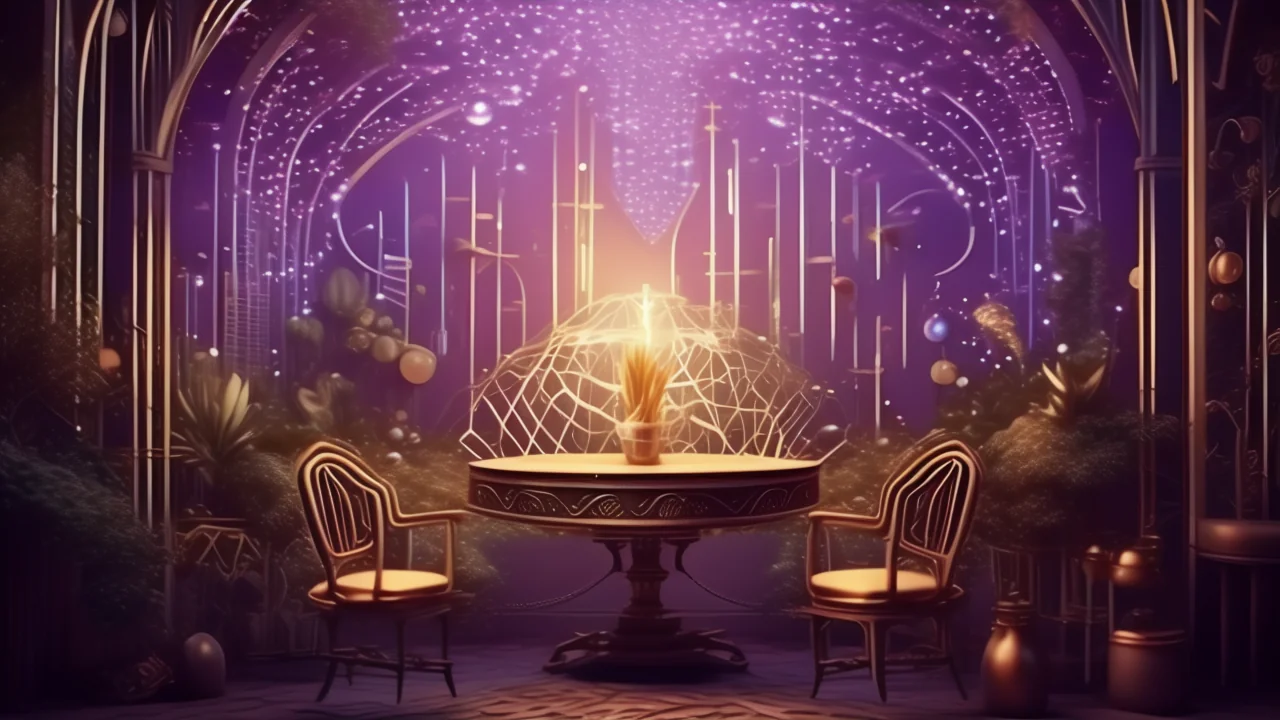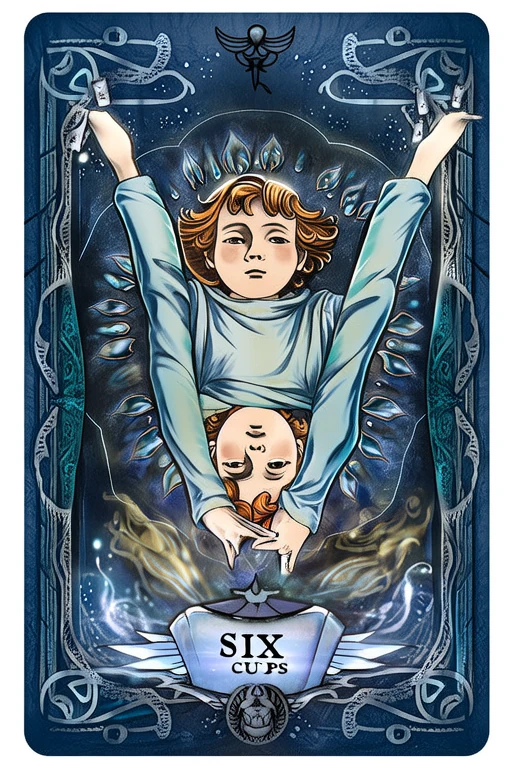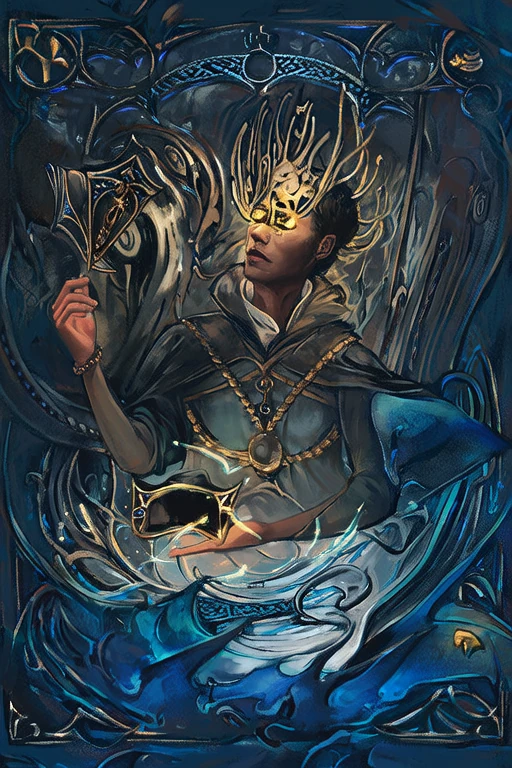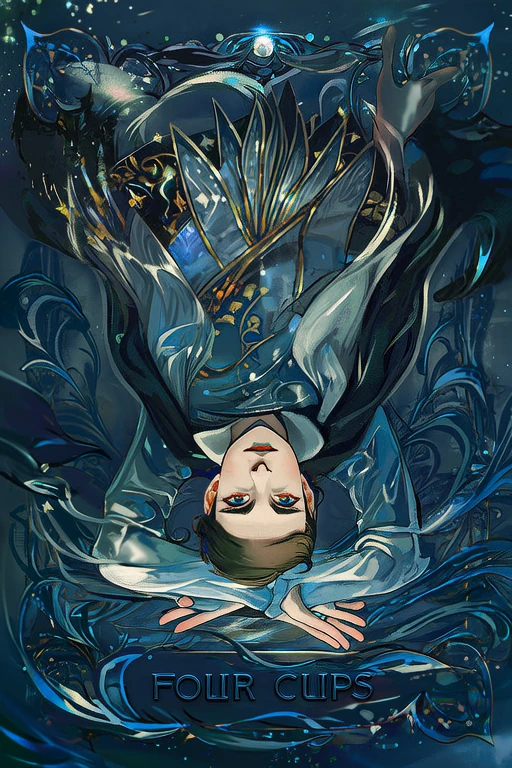
Six of Cups
Discover the deep meaning of Six of Cups with our free AI-powered tarot interpretation. Get instant, accurate readings based on advanced tarot knowledge.

Keywords
Upright Meaning
Revisiting the past, childhood memories, innocence
Reversed Meaning
Living in the past, forgiveness, lacking playfulness
Full Interpretation
The Six of Cups represents nostalgia, childhood memories, and innocent joy.
In-Depth Analysis
📜 Historical Background
The Six of Cups is a Minor Arcana card from the suit of Cups in the Tarot deck, traditionally associated with emotions, relationships, and spiritual fulfillment. Its origins trace back to the early 15th century in Europe, particularly in Italy and France, where the first known tarot decks, such as the Visconti-Sforza and the Marseille decks, were created. Originally used for playing card games, tarot evolved into a tool for divination and esoteric study during the 18th and 19th centuries, especially with the rise of occult societies like the Hermetic Order of the Golden Dawn.
In the classic Marseille Tarot, the Six of Cups is depicted with a simple geometric arrangement of six cups, often in a two-tiered pattern. This design was symbolic of emotional harmony and the passing down of knowledge or emotional legacies. However, it wasn't until the Rider-Waite-Smith (RWS) deck, created in 1909 by A.E. Waite and illustrated by Pamela Colman Smith, that the card took on a more narrative and symbolic visual form. In the RWS version, the Six of Cups shows a young boy offering a cup to a girl while standing in a garden filled with blooming flowers and six cups. This imagery evokes themes of innocence, nostalgia, and emotional sharing.
Historically, the Six of Cups has been linked to myths and legends concerning childhood, memory, and the transmission of wisdom. Some interpretations connect it to the myth of Demeter and Persephone, symbolizing the cycle of loss and reunion, as well as the emotional legacy between generations. In other traditions, it is associated with the biblical story of Joseph and his brothers, representing reconciliation and the return of what was lost.
Over time, various tarot decks have reinterpreted the Six of Cups to reflect different cultural and artistic sensibilities. The Thoth Tarot by Aleister Crowley and Lady Frieda Harris names the card “Success,” aligning it with emotional triumph and the resolution of past issues. In contrast, the Shadowscapes Tarot presents a dreamlike scene of a child offering a glowing cup, emphasizing the card’s mystical and imaginative qualities.
Culturally, the Six of Cups holds different meanings across regions. In Western interpretations, it often symbolizes nostalgia, childhood memories, or emotional healing. In some Eastern European traditions, the card is seen as a harbinger of ancestral blessings or a message from the past. Its universal themes of emotional inheritance, reconciliation, and innocence make it a powerful symbol across diverse cultures and eras.
Symbolism & Imagery
The Six of Cups is rich in symbolism, with each element of its imagery offering layers of meaning. In the Rider-Waite-Smith version, the central figures are a boy and a girl, representing the innocence of youth and the purity of emotional exchange. The boy offers a cup to the girl, symbolizing the sharing of feelings, memories, or even wisdom from one generation to another. This gesture reflects themes of generosity, emotional legacy, and the transmission of values.
The six cups arranged neatly in the background suggest a sense of order and emotional balance. The number six itself is associated with harmony, nurturing, and responsibility. In numerology, six represents domestic happiness and caregiving, reinforcing the card’s themes of emotional support and familial bonds.
The lush garden and blooming flowers surrounding the figures symbolize emotional growth and the blossoming of past experiences. The flowers, often depicted as roses or lilies, are traditional symbols of love, purity, and spiritual enlightenment. The setting evokes a sense of safety and familiarity, often linked to childhood or cherished memories.
Color symbolism is also significant. The soft pastel tones, especially the pale greens and pinks, evoke tenderness, compassion, and emotional healing. The blue garments worn by the figures symbolize emotional depth and intuition, while the golden cups represent spiritual richness and emotional fulfillment.
Across different cultures, interpretations of the Six of Cups vary slightly. In Western esoteric traditions, it is often associated with nostalgia, emotional healing, and the resolution of past issues. In some Middle Eastern and Eastern European interpretations, the card is seen as a sign of ancestral blessings or messages from the past. In Jungian psychology, the card resonates with the archetype of the Child, representing innocence, potential, and the uncorrupted self.
When upright, the Six of Cups typically signifies emotional healing, the return of something lost, or reconnecting with one’s past. It can indicate a nostalgic journey, a gift from the past, or emotional support from loved ones. Reversed, the card may suggest emotional stagnation, an unwillingness to let go of the past, or unresolved childhood issues that are affecting the present.
The Six of Cups also has connections with other cards in the Tarot deck. It shares thematic similarities with The Lovers (Arcana VI), which also deals with emotional connections and choices. It also resonates with The Empress, a card of nurturing and abundance, and The Hermit, which represents introspection and revisiting past lessons for wisdom.
Overall, the Six of Cups serves as a gentle reminder of the importance of emotional heritage, the healing power of memory, and the enduring impact of love passed down through generations.
Psychological Insights
From a psychological perspective, the Six of Cups resonates deeply with the human need for emotional connection, memory, and the integration of past experiences into present identity. Carl Jung's theory of archetypes finds a clear reflection in this card through the archetype of the Innocent Child — a symbol of purity, potential, and untainted emotion. This archetype represents the inner child within us all, urging us to reconnect with our emotional roots, heal past wounds, and embrace vulnerability as a source of strength.
In modern life, the Six of Cups offers valuable insights for personal growth and decision-making. It often appears when someone is revisiting past relationships, reconnecting with old friends, or reflecting on childhood experiences that continue to influence their emotional landscape. This card encourages individuals to embrace nostalgia not as a trap of the past, but as a source of wisdom and healing. It suggests that unresolved emotions from earlier stages of life may be resurfacing and need acknowledgment for true emotional maturity.
For self-awareness, the Six of Cups invites individuals to explore the emotional patterns inherited from family or early life experiences. It can signify the need to forgive oneself or others, release emotional burdens, or reclaim joy that was lost due to past disappointments. Therapeutically, this card is often used in counseling and emotional healing sessions to help clients process childhood trauma, reconnect with lost parts of themselves, or mend broken relationships.
In therapeutic tarot readings, the Six of Cups is a comforting presence, indicating that healing is possible through revisiting and understanding the past. Counselors may use this card to guide clients toward inner child work, helping them recognize how early experiences shape current emotional responses. It supports the idea that emotional growth comes not from rejecting the past, but from integrating it with compassion and understanding.
In modern spiritual practices, the Six of Cups is often associated with gentle energy work, emotional cleansing, and heart-centered healing. It is used in rituals aimed at reconnecting with lost loved ones, honoring ancestral wisdom, or invoking the protective energies of childhood guardians. Meditating on this card can help individuals access feelings of safety, love, and emotional nourishment, making it a powerful tool for those seeking emotional balance and spiritual renewal.
Correspondences
The Six of Cups corresponds to the astrological sign of Pisces, ruled by Neptune, which enhances its dreamy, intuitive, and emotionally rich qualities. Neptune’s influence brings a sense of idealism, compassion, and spiritual depth to the card, making it especially powerful during Piscean seasons or when Neptune is prominent in a person’s natal chart.
In terms of gemstones and crystals, the Six of Cups resonates with stones that promote emotional healing and spiritual connection, such as rose quartz (love and emotional healing), amethyst (spiritual clarity), and moonstone (intuition and feminine energy). These crystals can be used during meditation or placed near the card to enhance its nurturing and reflective energies.
Herbs and essential oils associated with the Six of Cups include lavender (for emotional calm), chamomile (for soothing memories and rest), and rose (for love and emotional renewal). These natural elements can be incorporated into rituals or aromatherapy sessions to align with the card’s gentle, healing vibration.
The Six of Cups is connected to the element of Water, symbolizing emotions, intuition, and the subconscious. It aligns with the season of Winter, a time of introspection and emotional stillness, and is often associated with the late afternoon, a transitional time of reflection and winding down.
In energy work, the Six of Cups influences the Heart Chakra (Anahata), promoting emotional healing, compassion, and connection to others. It also touches the Third Eye Chakra (Ajna), enhancing intuitive understanding and the ability to see beyond surface emotions.
Numerologically, the number six is associated with harmony, responsibility, and domestic happiness. It reinforces the card’s themes of emotional balance, nurturing, and the restoration of peace in personal relationships. As a number, six encourages the integration of love, care, and emotional maturity into daily life.
❓ Frequently Asked Questions
What does the Six of Cups mean in a love reading? In a love context, the Six of Cups often signifies emotional healing, reconnection with a past partner, or the return of affection from someone you once cared for. It can also indicate a relationship rooted in shared memories, deep emotional bonds, or a nurturing partnership.
Is the Six of Cups always about the past? While the Six of Cups is strongly associated with the past, it doesn't always indicate literal revisitation. It can also symbolize the emotional patterns, memories, or lessons from the past that are influencing your present situation.
What does the Six of Cups reversed mean in a career reading? Reversed, the Six of Cups in a career context may suggest holding onto outdated ideas, being emotionally stuck, or refusing to let go of past professional failures. It can also indicate nostalgia that's preventing forward progress or a need to break free from old habits.
How should beginners interpret the Six of Cups? Beginners often misinterpret the Six of Cups as solely about childhood or literal gifts. It's important to understand that it also represents emotional inheritance, healing, and the integration of past experiences into current growth.
What spreads work well with the Six of Cups? The Three-Card Past-Present-Future spread is ideal for exploring how past experiences influence current emotions. The Celtic Cross spread can reveal deeper subconscious influences tied to this card. For emotional healing, a simple one-card draw focused on inner child work can be powerful.
How does the Six of Cups interact with other cards? When paired with The Lovers, it suggests a deep emotional bond or reconnection. With The Tower, it may indicate emotional upheaval from unresolved past issues. With The Empress, it enhances nurturing and emotional abundance. With The Hermit, it signals a time of reflection and revisiting old lessons for wisdom.
Practical advice: Always consider the querent’s emotional state when interpreting this card. If they are stuck in nostalgia or avoiding growth, the reversed meaning may apply. Encourage them to embrace the lessons of the past without being held back by them. For healing readings, suggest journaling or inner child work to integrate the card’s energy.



